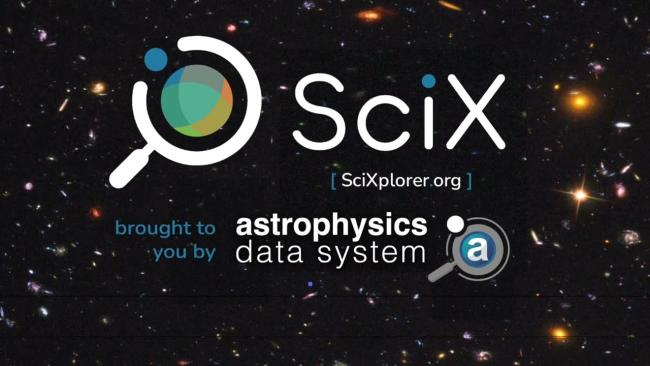The new research data and discovery platform expands beyond astrophysics into the Earth, environmental and space sciences.

Cambridge, MA -The team behind the NASA Astrophysics Data System (ADS) has officially launched SciX, a new research discovery platform that expands coverage beyond astrophysics into all areas of Earth, environmental and space sciences, including planetary science, heliophysics, geology, geophysics, atmospheric sciences and oceanography.
Developed in partnership with NASA at the Center for Astrophysics | Harvard & Smithsonian, SciX builds on ADS’s three decades of innovation in open research infrastructure. By extending powerful discovery tools to new and complementary domains, SciX aims to accelerate scientific progress, foster collaboration across disciplines, and make research more accessible to a global community of scientists, educators, and students.
Key features of SciX include:
- Expanded coverage: Beyond astrophysics, now supporting literature and datasets across space, Earth, and planetary sciences.
- Enhanced search and recommendations: Tools to connect researchers with relevant work across disciplines.
- Collaborative discovery: Breaking down silos between communities to enable integrated research approaches.
- Commitment to open science: Continuing NASA’s tradition of providing free, global access to cutting-edge research.
“Big scientific challenges - from the search for life in the universe to understanding solar activity and its impact on our planet - require researchers to work across traditional boundaries,” said Dr Alberto Accomazzi, Director of ADS and SciX and the project’s PI. “SciX enables this by providing an open, connected platform that brings communities together and accelerates discovery.”
The launch of SciX marks a milestone in NASA’s mission to support open science and improve the global research ecosystem. Researchers, educators, and the public can explore the platform at scixplorer.org.
“What sets it apart from other digital platforms right now [are] a ton of features and services that aren't available in other research platforms, but also the domain specificity and the ability to discover and access resources across all these geosciences,” said Danie Kinkade, Director of BCO-DMO repository, Information System Specialist at the Woods Hole Oceanographic Institution, and SciX Advisory Board member.
“Oceanography is inherently interdisciplinary to begin with, and I think SciX has the potential to be a really good tool there. SciX has curated content, so the accuracy of the result sets is higher than some of the other platforms available to our community. But in addition to that, I think some of the discovery facets, the search facets, and the visualizations of the results sets are really impressive to me. I think they really help improve understanding.”
Long-term ADS user Chris Lintott, former Chair of the ADS User Group and Professor of Astrophysics at the University of Oxford, also said, “ADS is the secret sauce that has made astronomical research possible for the last 30 years. As well as bringing new communities this valuable tool, this expansion recognises the increasingly interdisciplinary nature of our subject, connecting the astronomical literature with that of our sister subjects.”
About SciX
SciX is a NASA-partnered research platform developed as the next evolution of the Astrophysics Data System (ADS). It provides discovery tools, literature integration, and community support across space science, earth science, planetary science, heliophysics, and
geoscience. Watch our launch video here.
About the Center for Astrophysics | Harvard & Smithsonian
The Center for Astrophysics | Harvard & Smithsonian is a collaboration between Harvard and the Smithsonian designed to ask, and ultimately answer, humanity's greatest unresolved questions about the nature of the universe. The CfA is headquartered in Cambridge, MA, with research facilities across the U.S. and around the world.
Media Contact:
Christine Buckley
Director of Communications
Center for Astrophysics | Harvard & Smithsonian